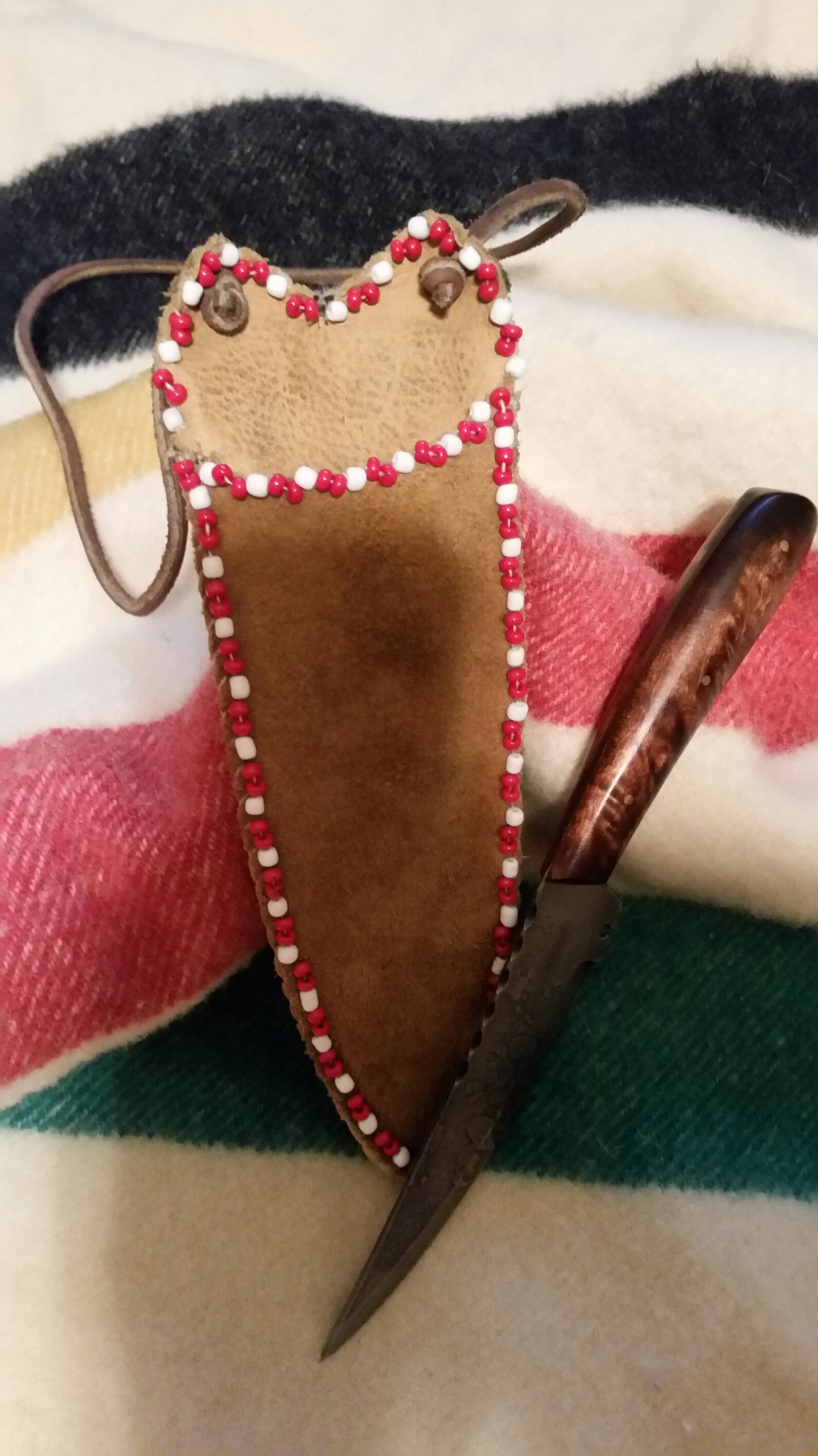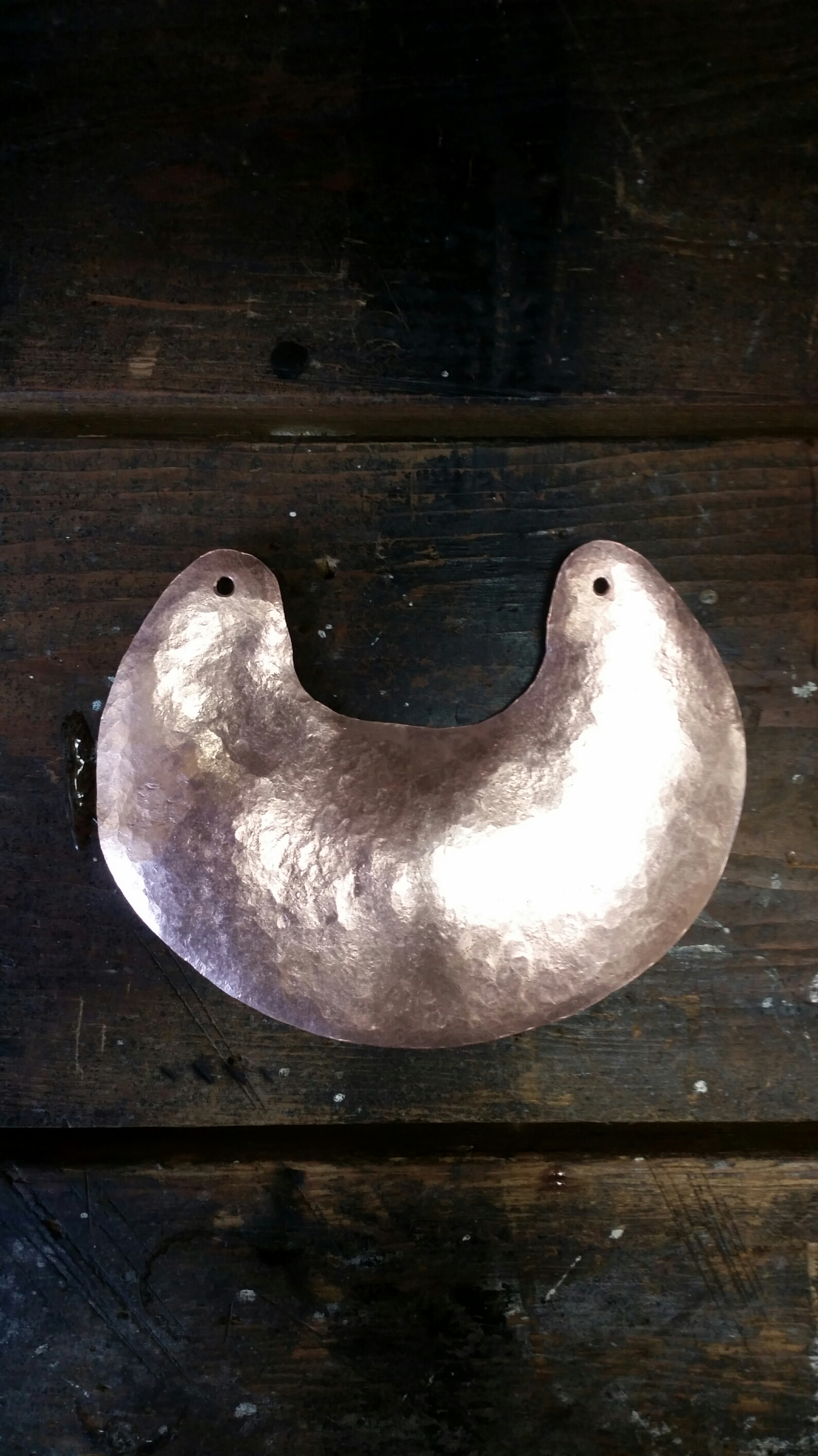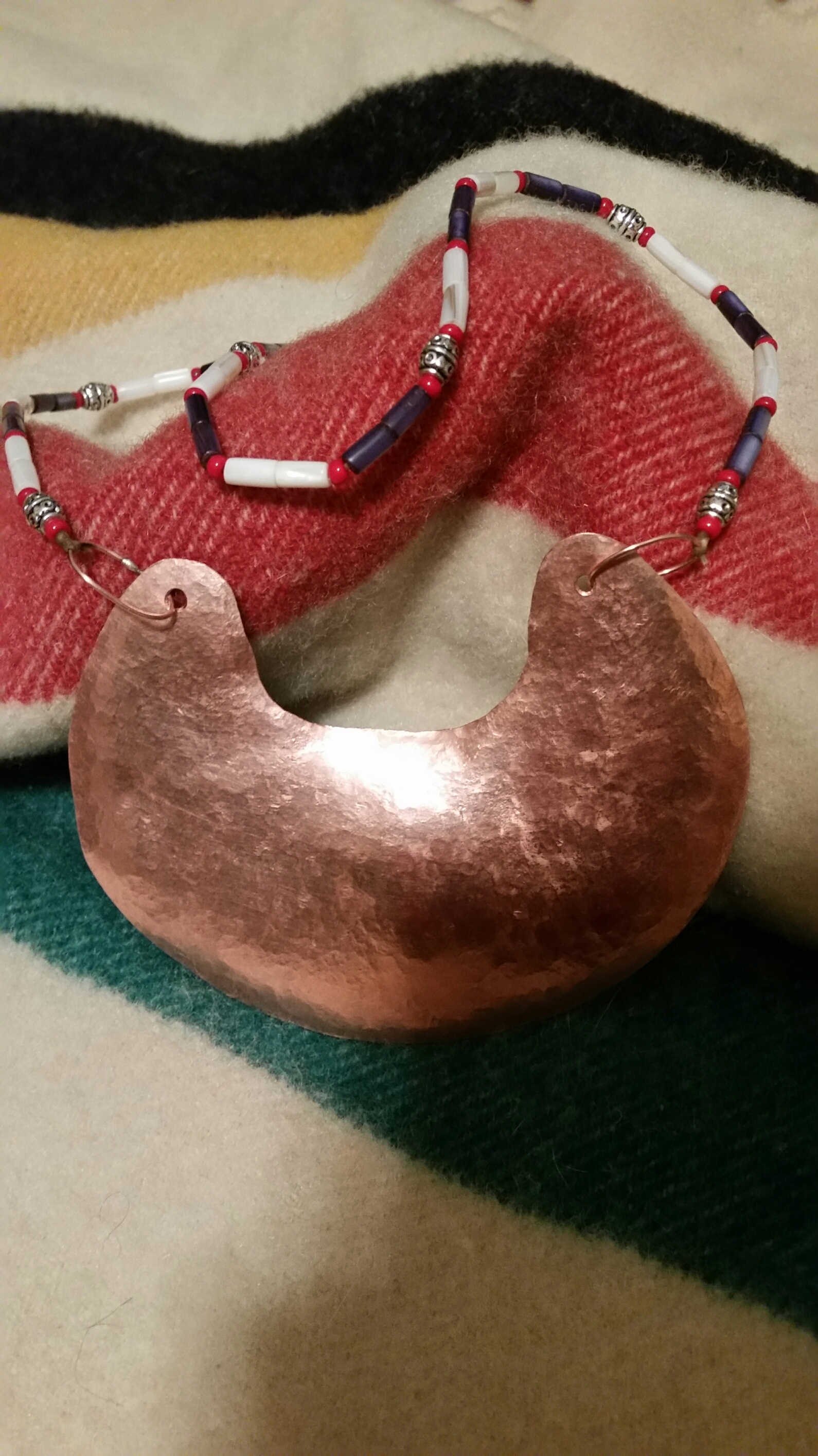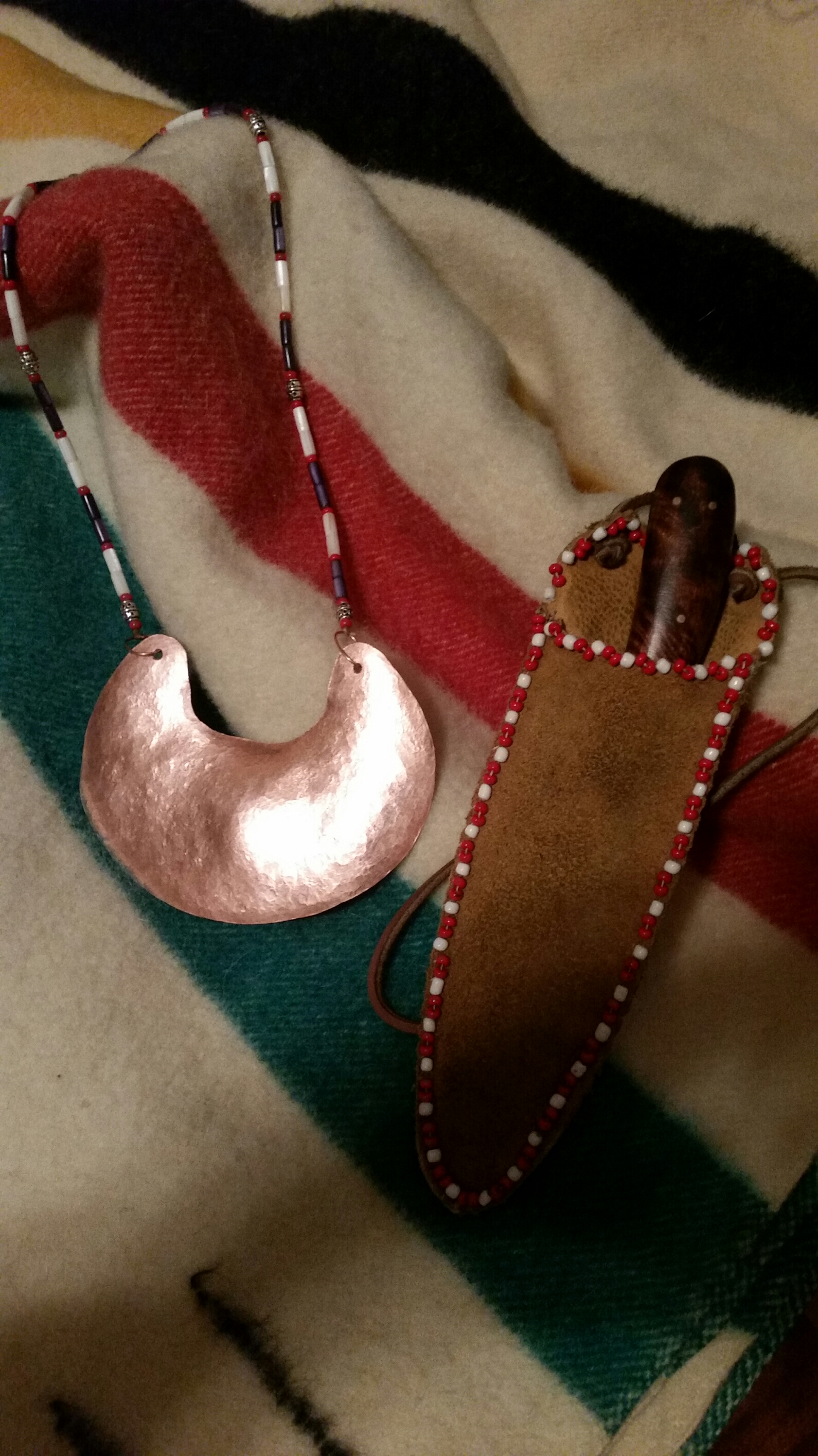Evening all, I wanted to take a few minutes and share a few item's I crafted today.
First is a neck knife sheath made from deer hide and adorned with glass beads sewn with heavy linen thread. The sheath is also welted at the seams along with a double welt at the bottom for obvious reasons.

Now on to the trade gorget! For anyone who is interested, these items were highly sought after trade items. Gorgets are well documented and were commonly worn by officers and traded to many Native tribes. Made from brass, copper and tin, it was a relatively easy item for Natives to construct for personal wear and also trade.
I decided to make one from .025 thick copper sheeting, which could have been cut from a copper pot in the day. Made a template that I transfered to the copper sheet and carefully cut along the outline with tin snips. After the ruff gorget was cut, I filed the remaining edges down and began to shape the piece on my anvil. After shaping, I polished the piece and started the beadwork. Holding it all together I used real sinew cordage that's twisted and waxed with beeswax. Next I used real purple dyed/ white wampum beads accented with trade silver beads and red glass beads. The loops attached to the gorget are heavy gauge copper wire soldered into... loops. Very pleased with the finished project. :hatsoff:



First is a neck knife sheath made from deer hide and adorned with glass beads sewn with heavy linen thread. The sheath is also welted at the seams along with a double welt at the bottom for obvious reasons.

Now on to the trade gorget! For anyone who is interested, these items were highly sought after trade items. Gorgets are well documented and were commonly worn by officers and traded to many Native tribes. Made from brass, copper and tin, it was a relatively easy item for Natives to construct for personal wear and also trade.
I decided to make one from .025 thick copper sheeting, which could have been cut from a copper pot in the day. Made a template that I transfered to the copper sheet and carefully cut along the outline with tin snips. After the ruff gorget was cut, I filed the remaining edges down and began to shape the piece on my anvil. After shaping, I polished the piece and started the beadwork. Holding it all together I used real sinew cordage that's twisted and waxed with beeswax. Next I used real purple dyed/ white wampum beads accented with trade silver beads and red glass beads. The loops attached to the gorget are heavy gauge copper wire soldered into... loops. Very pleased with the finished project. :hatsoff:








